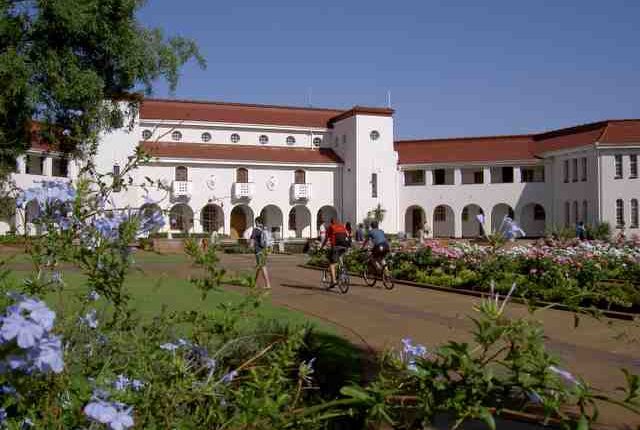UN to relaunch Chair on Multimodal Learning and Open Educational Resources at North-West University
A key United Nations agency has shown its confidence in the North-West University (NWU) by relaunching the Chair on Multimodal Learning and Open Educational Resources for a second term of four years.
The United Nations Educational, Scientific and Cultural Organisation (UNESCO) has approved the NWU’s submission for a renewal of the chair, which was initially awarded to the university in 2019. The chair was relaunched in June.
“The renewal shows that the NWU is recognised as a leader in promoting multimodal learning and research in open educational resources (OERs),” says the chairholder, Prof Dorothy Laubscher, associate professor in mathematics.
She has taken over from Prof Jako Olivier, who was instrumental in establishing the chair at the NWU and left the service of the university last year for a position at the Commonwealth of Learning in Canada. The chair’s first term ended in November 2022, when the renewal application was submitted and subsequently approved.
Prof Laubscher says access to free, good-quality educational resources is crucial for student success. Such resources are especially important for South Africa and other countries in the Southern African Development Community, where good-quality learning material is not always readily available.
The chair is helping to open doors to education by focusing on multimodal learning and the multiliteracies needed for culturally appropriate and effective learning within an environment that is favourable to self-directed learning and OERs.
“It is part of our commitment to facilitating accessible, relevant and high-quality teaching and learning,” she says, adding that the NWU’s strengths in the OER sphere lie in its blending of face-to-face learning and e-learning methods.
Many opportunities open up for the NWU
Prof Laubscher says the promotion of multimodal and self-directed learning is important in the NWU’s teaching and learning strategy and opens new doors for the NWU itself.
“We are excited about the opportunities that accompany a second term. This currently includes working with the UNESCO Chair on Personalised and Adaptive Learning from the Swiss Distance University of Applied Sciences on a research project about self-assessment and multimodality. We also network with other OER UNESCO chairholders.”
Prof Laubscher says other important projects include the completion of their project on OER fellows, as well as a joint seminar with Prof Ruksana Osman, the UNESCO Chairholder on Teacher Education for Diversity and Development at the University of the Witwatersrand.
The NWU Chair on Multimodal Learning and Open Educational Resources also plans more projects on professional development for teachers and the development of OERs.
How the chair works
The chair and its executive committee collaborate closely with the researchers within the NWU’s research unit for Self-Directed Learning and other related UNESCO chairs.
Its focus is on building networks around OER and multimodal learning in southern Africa and building capacity at the NWU and in southern Africa. The chair will also train and develop academic expertise among staff on multimodal learning and the creation and use of OERs, as well as doing research on OER and multimodal learning.
“We focus on multimodal learning where technology plays an important part,” says Prof Laubscher. “We have done a lot of work on facilitating the use of technology in education for professionals and students ― especially in higher education, but also in secondary education.
“OERs can assist in filling the gap where higher-education institutions and schools are not well resourced. OERs can be accessed anywhere, any time with little or no cost and can augment existing class material,” she adds.
“It is a great honour to collaborate with UNESCO. We are looking forward to exploring new frontiers and to paving the way for more developments in multimodal learning and OERs. Many thanks go to the NWU management for the tremendous support that they show in continuing the work of the chair.”

